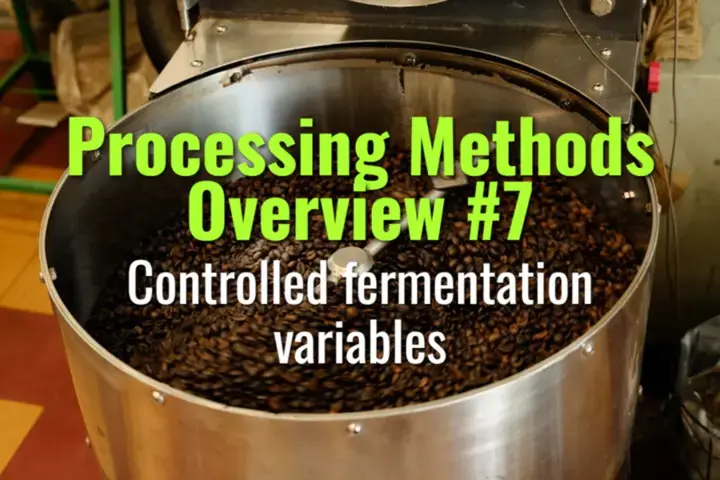Controlled fermentation variables
This topic explains the key variables that influence coffee fermentation, how they are controlled, and their impact on flavor development and consistency in processing.
- Coffee Basics Nerds
- 2 min read
Article 7 of 12 in Processing Methods Overview/

Why Control Fermentation?
- Fermentation is a critical step in removing mucilage and shaping flavor.
- Uncontrolled fermentation risks defects (over-fermentation, mold, off-flavors).
- Controlled fermentation enhances consistency, predictability, and quality.
Key Fermentation Variables
1. Temperature
- Higher temperatures → faster fermentation, risk of over-acidity and sourness.
- Cooler temperatures → slower, more controlled fermentation with delicate flavors.
- Monitoring range: 15–30°C.
2. Time
- Too short → incomplete mucilage breakdown.
- Too long → risk of spoilage or unwanted microbial activity.
- Typical range: 12–72 hours (varies by method and climate).
3. Oxygen Availability
- Aerobic fermentation: Open tanks, oxygen present → brighter acidity, clean profiles.
- Anaerobic fermentation: Sealed tanks without oxygen → fruity, winey, complex profiles.
- Carbonic maceration: CO₂-rich environment, distinct tropical notes.
4. Microbial Populations
- Natural yeasts and bacteria vary by region.
- Inoculation with selected microbes (yeast, lactic acid bacteria) allows tailored flavor outcomes.
- Microbial balance shapes aromatic complexity.
5. pH Levels
- Ideal fermentation ends around pH 4.0–4.5.
- Monitoring pH helps determine endpoint and avoid spoilage.
6. Cherry Condition
- Ripe cherries ferment predictably, producing sweet, clean cups.
- Unripe or overripe cherries introduce inconsistent sugars and microbial populations.
7. Water Use & Quality
- Clean water essential in washed processes.
- Contaminated water may introduce undesirable microbes.
Tools for Control
- Thermometers and temperature loggers.
- pH meters for acidity tracking.
- Sealed tanks with valves for anaerobic conditions.
- Timed monitoring with regular cupping trials.
Sensory Impacts of Variable Control
- Temperature & time → acidity and sweetness balance.
- Oxygen & microbes → fruitiness, complexity, or cleanliness.
- pH & water → consistency and absence of defects.
Lasting Importance
Controlling fermentation variables transforms processing from an art based on tradition into a science of precision. By managing temperature, time, oxygen, microbes, and pH, producers can deliver reliable, distinctive cup profiles, advancing the boundaries of specialty coffee.